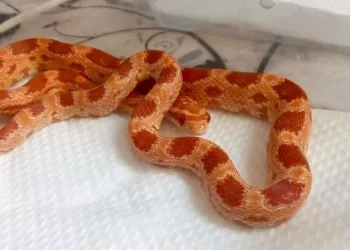Tortoises are fascinating creatures that have captivated the hearts of many pet owners and enthusiasts. Known for their slow pace, hard shells, and unique behaviors, tortoises also exhibit a variety of breeding habits that can be both intriguing and challenging. This article explores the various aspects of tortoise breeding, addressing the question: Is breeding tortoises easy? To provide a comprehensive understanding, we will delve into their natural behaviors, reproductive biology, environmental needs, and the challenges involved in breeding tortoises.
Understanding Tortoise Biology
Before discussing breeding, it’s essential to understand the biology of tortoises. Tortoises belong to the order Testudines and are characterized by their bony or cartilaginous shell that shields them from predators. They are ectothermic (cold-blooded) animals, which means their body temperature is regulated by the environment. This physiological trait influences their breeding behaviors, as reproductive activities often correlate with temperature and seasonal changes.
Species Variability
There are over 50 species of tortoises, each with its own unique characteristics, habitats, and breeding behaviors. Some of the most common species found in captivity include:
- Eastern Box Tortoise (Terrapene carolina)
- Russian Tortoise (Testudo horsfieldii)
- Sulcata Tortoise (Centrochelys sulcata)
- Red-footed Tortoise (Chelonoidis carbonarius)
- African Spurred Tortoise (Centrochelys sulcata)
Each species has specific requirements for breeding, including temperature, humidity, and nesting preferences, making it crucial for breeders to understand these differences before attempting to breed tortoises.
Natural Breeding Behaviors
In the wild, tortoises have distinct breeding seasons, typically influenced by climate and environmental conditions. Understanding these natural behaviors can provide insights into breeding them in captivity.
Mating Rituals
During the breeding season, male tortoises often engage in courtship behaviors to attract females. These behaviors may include:
Head bobbing: Males may bob their heads to show interest.
Chasing: Males often pursue females to demonstrate dominance.
Biting: Males may gently bite females’ shells or legs during mating.
These courtship rituals can vary significantly between species. For example, the Russian tortoise is known for its aggressive mating behavior, whereas the red-footed tortoise may engage in more subdued courtship displays.
Copulation
Once a female is receptive, mating occurs, which can last anywhere from a few minutes to several hours. After successful copulation, fertilization occurs internally. The female can store sperm for several months, allowing her to produce multiple clutches of eggs from a single mating.
Egg Laying
The timing and conditions for laying eggs depend on the species and environmental factors. Generally, females will seek out a suitable nesting site, often in sandy or loose soil, where they can dig a hole to deposit their eggs. Tortoises typically lay between 1 to 30 eggs per clutch, depending on the species, and may produce multiple clutches per season.
Incubation
Once the eggs are laid, the incubation period varies by species but generally lasts between 60 to 120 days. Factors such as temperature and humidity play a critical role in successful incubation. The optimal temperature range for tortoise eggs is usually between 28°C and 32°C (82°F to 90°F).
Setting Up for Breeding
Successfully breeding tortoises requires careful planning and a proper environment. Below are the essential components needed to create a suitable breeding setup.
Enclosure Requirements
Size and Space: The enclosure size must be adequate to accommodate the tortoises comfortably. Generally, a larger space promotes better health and well-being. For breeding pairs, a minimum of 8 feet by 4 feet is recommended, but larger is always better.
Substrate: Use a substrate that allows for digging, such as a mix of sand and soil. This is especially important for nesting females.
Temperature and Lighting: Tortoises require a temperature gradient in their habitat, with a basking area that reaches 35°C to 40°C (95°F to 104°F) and a cooler area around 21°C to 26°C (70°F to 80°F). UVB lighting is essential for tortoises, as it helps them synthesize vitamin D3, crucial for calcium metabolism.
Humidity: Different species have varying humidity needs. For example, red-footed tortoises thrive in higher humidity levels (60%-80%), while desert species like the Russian tortoise prefer drier conditions.
Shelter and Hiding Spots: Providing shelters and hiding spots helps reduce stress, especially for females during the nesting period.
Diet and Nutrition
Proper nutrition is vital for healthy tortoises and successful breeding. A balanced diet should include:
High-fiber greens: Leafy greens like kale, collard greens, and dandelion greens.
Vegetables: Carrots, squash, and bell peppers.
Protein: Some species, like red-footed tortoises, benefit from occasional protein sources such as cooked eggs or insects.
Calcium Supplements: Essential for females before and after laying eggs to ensure healthy shell development in the offspring.
Health Considerations
Before breeding, it’s crucial to ensure both the male and female tortoises are in optimal health. Regular veterinary check-ups and screenings for parasites are essential. Signs of poor health may include lethargy, lack of appetite, or abnormal behavior.
Stress Reduction
Breeding can be a stressful time for tortoises. Minimizing disturbances in their environment during the breeding season is vital. Avoid excessive handling and noise, and provide plenty of hiding spots to make them feel secure.
Breeding Challenges
While breeding tortoises can be rewarding, several challenges may arise throughout the process. Understanding these challenges can help potential breeders prepare and increase their chances of success.
Age and Maturity
Tortoises take several years to reach sexual maturity, which varies by species. For instance, sulcata tortoises typically reach maturity at 5 to 10 years, while eastern box tortoises may take longer. Breeding immature tortoises can lead to health problems for both the parents and the offspring.
Genetic Considerations
Selective breeding can enhance desirable traits but can also lead to inbreeding, which increases the risk of genetic disorders. Maintaining a diverse genetic pool is crucial to avoid health issues and improve the overall quality of the offspring.
Environmental Factors
As previously mentioned, temperature and humidity are critical for egg incubation. Fluctuations can lead to failed clutches or, worse, malformed hatchlings. Monitoring environmental conditions closely during breeding and incubation is essential.
Maternal Health
The health of the female tortoise significantly impacts breeding success. A stressed or malnourished female may have difficulty laying eggs, leading to egg-binding (a condition where the female cannot pass the eggs). This can be life-threatening and requires immediate veterinary attention.
Male Aggression
During the breeding season, male tortoises can become aggressive toward each other and even toward females. Providing enough space and hiding spots can help mitigate aggression. In some cases, separating males during mating may be necessary to prevent injuries.
The Process of Egg Incubation
Once eggs are laid, proper incubation is crucial for successful hatching. Here’s an overview of the incubation process:
Setting Up an Incubator
Using a reliable incubator helps maintain optimal conditions for the developing embryos. Essential features include:
Temperature Control: The incubator should maintain a consistent temperature, ideally around 30°C (86°F) for many tortoise species.
Humidity Control: Most tortoise eggs require a humidity level of 50% to 70%. Excess humidity can lead to mold growth, while too little can cause eggs to desiccate.
Airflow: Proper ventilation is necessary to prevent carbon dioxide buildup, which can harm developing embryos.
Monitoring Eggs
Regularly check the eggs for signs of development, such as changes in color or texture. Candling (illuminating the eggs to see inside) can help determine if the eggs are fertile and developing properly.
Hatching
Hatching typically occurs within a narrow time frame depending on the species. Hatchlings will often emerge by using an egg tooth, a temporary structure on their beaks. After hatching, they should remain in the incubator for a few hours to absorb the remaining yolk sac, which provides essential nutrients.
Caring for Hatchlings
Once the hatchlings emerge, providing the right care is crucial for their survival and growth.
Enclosure Setup
Space: Hatchlings require adequate space to move around but should be kept in a secure enclosure to prevent escapes.
Temperature and Lighting: Maintain a warm environment with a basking spot and ensure they have access to UVB lighting.
Diet: Start hatchlings on a diet appropriate for their species, emphasizing high-fiber foods. Young tortoises may need smaller food pieces to prevent choking.
Health Monitoring
Regular health checks for hatchlings are essential. Watch for signs of illness or stress, and provide veterinary care if needed. Proper hydration and temperature management are also crucial, as young tortoises are more susceptible to environmental stress.
Conclusion
In conclusion, breeding tortoises is a rewarding but complex endeavor. While many factors can contribute to the ease or difficulty of breeding, understanding the biology, natural behaviors, and environmental needs of tortoises is essential. From setting up the right environment to monitoring health and incubation conditions, successful tortoise breeding requires careful planning and dedication.
For those considering tortoise breeding, it’s essential to approach it with a commitment to the well-being of the animals involved. With the right knowledge, resources, and passion, breeding tortoises can be a fulfilling experience that contributes positively to the species and the broader reptile community.
Related Topics:


























